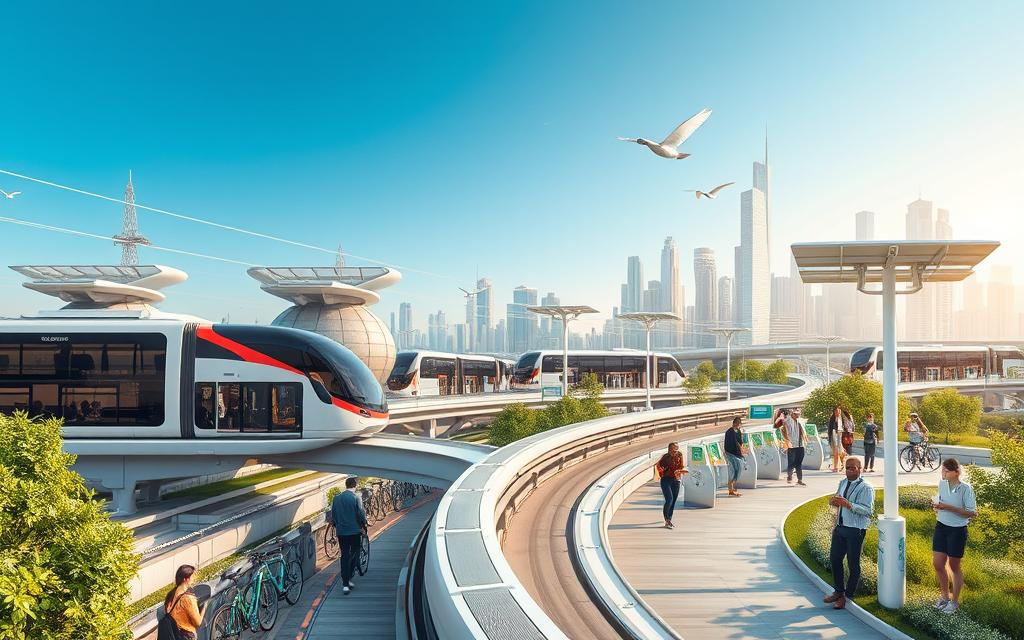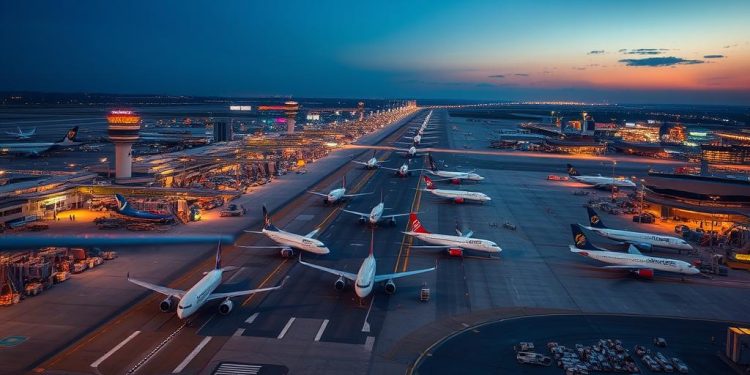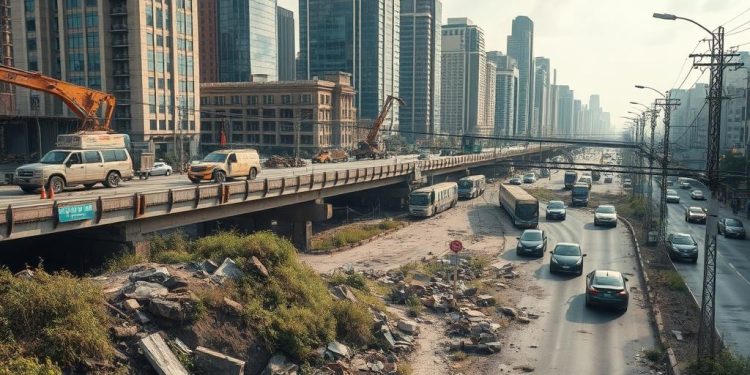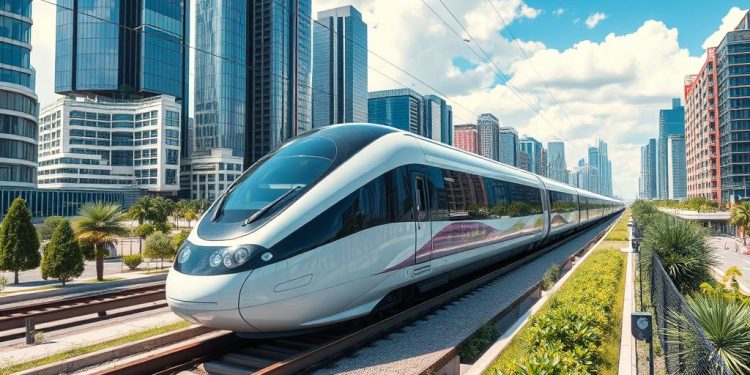Public transit systems play a vital role in enhancing urban mobility across major U.S. cities. With the pressing need for reliable, efficient, and accessible transportation options, many cities are focusing on integrating innovative technologies into their public infrastructure. Studies have shown that improving public transit can significantly enhance community well-being, stimulate economic growth, and combat climate change.
As cities navigate the complexities of urban transport, a growing emphasis on sustainable transport solutions is evident. From electric buses to on-demand transit services, there are numerous innovative practices worth exploring. For instance, Wilson, North Carolina’s on-demand transit service has remarkably increased its weekly rides from 1,400 to approximately 3,700, showcasing how effective strategies can revolutionize public transit operations.
Furthermore, the adoption of smartphone transit apps proves to improve rider perception and reduce wait times at transit stops, making commuting more convenient. The following sections will delve deeper into the latest advancements in public transit, illustrating how these best practices and innovations can shape the future of urban mobility.
Overview of Public Transit in Major U.S. Cities
Public transit services in major U.S. cities encompass a varied array of options crucial for daily commuting. From heavy and light rail systems to bus rapid transit and paratransit services, these subway systems are designed to enhance accessibility and connectivity. Despite their relevance, approximately 45% of Americans find it challenging to access these essential services. Cities like Spokane are making strides, recently introducing double-decker buses while also managing 16 routes that will see service changes.
Ridership trends exhibit a complex landscape. While public transit passenger trips have risen by 37% over the last 50 years, recent years have seen a decline of 8% since 2014, worsened by the COVID-19 pandemic. You might note the impact of remote work and the growth of ride-sharing services as significant factors behind this downturn. This shifting dynamic highlights the ongoing need for commuter benefits that cater to diverse populations and their needs.
Equity remains a pressing issue within the public transit conversation. Access to services plays a crucial role in providing residents with opportunities for employment, education, and healthcare. Initiatives like Spokane Transit’s $2 million Federal grant for Urban Mobility and Bus Rapid Transit programs aim to strengthen these connections. Promoting family benefits and competitive pay can attract new talent to transit authorities, ultimately improving service quality and efficiency.
Various international comparisons underscore how public transit systems can evolve. For instance, since 2020, Luxembourg has implemented free public transport, illustrating an innovative approach to transit funding and user engagement. Meanwhile, cities like Toronto and Chicago have faced declining ridership, further emphasizing the need for adaptable service models that respond to changing demographics and consumer behaviors.
| City | Factors Affecting Public Transit Usage | Recent Developments |
|---|---|---|
| Spokane | Service changes & income levels | Introduction of double-decker buses |
| Toronto | Remote work & ride-sharing growth | Decline in ridership post-2014 |
| Luxembourg | Accessibility & affordability | First country to abolish public transport fares |
| Chicago | Economic factors & commuter habits | Similar decline in transit usage |
The historical context of public transit highlights the evolution from the world’s first electric streetcar to the modern subway systems we enjoy today. Understanding these developments aids in navigating the future of public transit while addressing the challenges that come with it.
Innovative Technologies Transforming Public Transit
The landscape of public transit is rapidly evolving, driven by innovative technologies aiming to enhance sustainability and efficiency. Public transit agencies across the United States are increasingly adopting eco-friendly technologies, particularly in the form of electric buses. These advancements are not only reducing greenhouse gas emissions but are also enhancing the quality of urban mobility.
Electric and Eco-Friendly Buses
Electric buses stand as a critical component of sustainable transport strategies in urban areas. For instance, initiatives to increase the frequency of routes have led to the Old Town Express now operating every 20 minutes, a significant improvement from its previous schedule of every 40 minutes. This shift promotes greater accessibility and convenience for passengers. Furthermore, electric bus services extend operational hours, with routes running until 2:10 AM. Enhanced bus stops, focusing on ADA access, also illustrate a commitment to inclusivity while leveraging eco-friendly technologies.
Autonomous Transit Solutions
The integration of autonomous vehicles into public transit solutions offers exciting possibilities for enhancing safety and user experience. A pilot program in Scotland showcases how automation can be balanced with human support, ensuring a more reliable and safer transit option. Public transport systems such as LYNX Bus Service, which accommodates an average of 90,000 passenger trips daily, exemplify the potential for automated systems to streamline operations while providing a seamless travel experience. The focus on creating cohesion between autonomous capabilities and existing transit infrastructure is essential for further growth.
| Route | Frequency | Operational Hours | Notes |
|---|---|---|---|
| Old Town Express | Every 20 minutes | 2:10 AM | Increased from every 40 minutes |
| City Wide Route | Every 15 minutes | 11:40 PM to 1:40 AM | Night service available |
| Route 23 Pink | Every 20 minutes | 11:30 AM to midnight | Sundance-specific service |
| Route 24 Orange | Varies | 7 AM to midnight (Jan 23-25), 9 AM to 9 PM (Jan 26-Feb 2) | Seasonal service adjustment |
| Route 25 Gold | Daily | 8 AM to 2 AM | Service starts Jan 23 |
| Frisco Demand Response | Curb-to-curb | 6 AM to 6 PM (Mon-Fri) | Eligibility for seniors and disabled residents |
Best Practices for Enhancing Urban Mobility
To improve urban mobility effectively, cities are turning to innovative strategies that prioritize user needs and environmental sustainability. Emphasizing flexible transit solutions can address the evolving commuting patterns influenced by changing work hours and lifestyles. The implementation of on-demand transit models allows cities to adapt quickly, as seen in communities like Wilson, North Carolina, which have significantly increased ridership through this approach.
Flexible and On-Demand Services
Utilizing on-demand transit services offers a responsive solution for urban areas facing fluctuating passenger demands. For instance, MARTA’s recent initiatives demonstrate a commitment to flexible transit solutions, as they secured a $2.6 million grant for new electric buses aimed at cutting emissions. Riders appreciate the newfound convenience these options provide, with nearly 50% of users aged between 16 and 34, indicating that younger demographics are increasingly embracing modern transit services. Cities are also enhancing service frequency, with a recognized 20% increase in major regions, showing a direct correlation between improved services and rider satisfaction.
Mobility Hubs for Accessibility
Mobility hubs serve as critical points in urban transit networks, designed to enhance accessibility features for all users. These hubs incorporate various transportation modes, offering seamless connections between buses, bikes, and rideshare options. By redesigning transit stations to include bike storage and charging docks for electric bicycles, cities address the accessibility concerns of individuals with disabilities and other barriers to mobility. As part of their ongoing efforts, MARTA adds approximately 200 new shelters and amenities at bus stops each year, reflecting the importance of building infrastructure that prioritizes user experience.
Boosting Transit Reliability with Technology
In urban transit systems, technology plays a vital role in enhancing reliability. The emergence of transit technology has transformed how you interact with public transportation. For instance, smartphone apps offer features such as bus schedules, real-time data on arrival times, and alerts for service changes. These enhancements ensure you have the most accurate information at your fingertips, ultimately improving your experience.
Mobile ticketing is another advancement that streamlines the boarding process. By allowing you to purchase and store tickets on your smartphone, this system not only reduces wait times but also increases overall service efficiency. Transit agencies benefit as well; faster boarding means quicker trips, allowing more passengers to be accommodated during peak hours.
Systems like the Presidio GO Shuttle illustrate how technology boosts reliability. This free shuttle runs daily, offering convenient service to and from the park, while integrating various transit connections like Muni and Golden Gate Transit. Such seamless interactions between different services encourage ridership and promote the use of public transportation.
Overall, the strategic integration of transit technology in modern transit systems helps overcome challenges of increasing ridership. By leveraging real-time data and mobile options, cities can navigate the complexities of urban transit more effectively.
Addressing Funding and Infrastructure Challenges
Public transit systems face significant funding challenges as they grapple with essential infrastructure investments. The COVID-19 impact has accelerated these challenges, revealing vulnerabilities in revenue streams. With a staggering national transit backlog estimated at $176 billion, it becomes evident that many aging systems cannot sustain themselves without robust financial support.
The Impact of COVID-19 on Transit Revenues
The pandemic prompted a dramatic decline in ridership across various cities, resulting in costly fare revenue losses. Remote work trends and attractive car financing options exacerbated this issue, leading to lower patronage on public transport. Cities like Toronto and Chicago have reported notable decreases in usage, further stressing funding for necessary maintenance and developments.
Future Needs for Sustainable Investment
Looking ahead, sustainable funding emerges as a critical need for public transport agencies. Initiatives such as the CARES Act have offered some relief, but reliance on federal assistance will not solve the underlying infrastructure investments required for modernization. To thrive, transit agencies must establish reliable funding streams, which are essential for meeting maintenance demands and enhancing service quality.
Conclusion
As we explore the public transit advancements across major U.S. cities, it becomes evident that a multifaceted approach is essential for fostering a brighter and more efficient urban transportation future. By integrating innovative technologies and implementing best practices, public transit systems can greatly enhance their reliability and accessibility, while also promoting environmentally responsible solutions. For example, the substantial 47% reduction in freeway congestion due to public transit availability in cities like Los Angeles showcases the potential benefits for everyday commuters.
Moreover, overcoming longstanding funding and infrastructure challenges will play a crucial role in actualizing these improvements. The $2.1 billion in annual savings attributed to public transit not only makes commuting more affordable but also contributes to social inclusion for low-income families and other marginalized groups. Investing in sustainable mobility options will ensure a lasting positive impact on community health and well-being.
Ultimately, it is imperative for policymakers, transit agencies, and community stakeholders to collaborate and embrace these strategies. By working together, we can realize the vision of a more equitable and sustainable future for public transit, benefiting not only today’s urban commuters but also generations to come.







